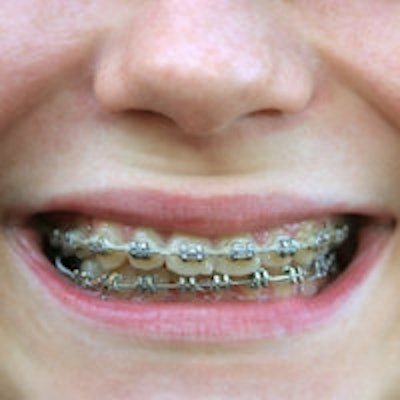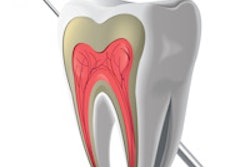
Bisphosphonate-related osteonecrosis of the jaw has been a topic of much discussion in dentistry, but the altered bone metabolism as a result of taking this medication and its effect on orthodontic treatment remain unclear.
Now a new study has found that while orthodontic tooth movement under bisphosphonate medication is possible, especially in low-risk patients, the treatment is still not predictable (Head & Face Medicine, April 4, 2013).
Study author Elena Krieger, DMD, from the department of orthodontics at the University Medical Centre of the Johannes Gutenberg University Mainz, told DrBicuspid.com that one of her specialties is orthodontic treatment of adult or elderly patients. As a result, she often comes across patients with various medical conditions and different medications that can have considerable influence or side effects on orthodontic planning and treatment.
"Bisphosphonates are commonly prescribed for osteoporosis prevention, and they affect the bone metabolism, but it's still unknown how they affect orthodontic treatment," Dr. Krieger said.
One of her patients was a 66-year-old woman who was taking bisphosphonates and was also being treated in various departments of the medical center, which made her case quite interesting, Dr. Krieger noted. When she decided to write a case report on this patient, she discovered the lack of evidence on how to work with orthodontic patients undergoing bisphosphonate medication.
"Only a few case reports and one cohort study exist," Dr. Krieger said. "Otherwise, only in vitro and animal studies or guidelines concerning surgical or general dental treatments can be found."
Lack of predictability
Dr. Krieger and her colleagues therefore conducted this study to evaluate and demonstrate the reported effects and the current state of scientific research regarding orthodontic treatment and bisphosphonate medication. They culled PubMed for relevant studies published from January 2000 through January 2013, and conducted a manual search of professional orthodontic journals published in German. They also analyzed the citations in identified articles.
Their inclusion criteria included reports on humans, bisphosphonate treatment, and orthodontic treatment; exclusion criteria included reports on animals and a lack of bisphosphonate and/or orthodontic treatment. The authors identified 28 articles, seven of which met the inclusion criteria. These included four case reports, two case series, and one original article.
Here are some of their key findings:
- Some of the articles reported decelerated tooth movement with increased side effects (especially in high-risk patients) and longer treatment duration.
- Patients with initial spacing or extraction cases had a higher risk of incomplete space closure and poor root parallelism.
- The authors noted that while orthodontic tooth movement under bisphosphonate medication is possible, especially in low-risk patients (low dose and short period of intake), the treatment is still not predictable, especially in high-risk patients.
"The altered bone metabolism and higher extent of side effects should be considered in treatment planning, especially in extraction cases or high-risk patients," the researchers wrote. "Regardless, longer treatment duration, decelerated tooth movement, and more side effects, e.g., incomplete space closure and poor root parallelism, should be expected, especially in extraction cases or space closure."
More older orthodontic patients
They also noted that with the increasing number of older patients requiring orthodontic treatment, the number of patients with a medical history including bisphosphonates treatment is increasing. Considering the half-life of this medication, doing an intensive examination of the patient's overall medical history before starting treatment is important.
"Due to the missing scientific evidence, orthodontic tooth movement in patients exposed to bisphosphonates is still unpredictable, and risk stratification should be performed," the authors recommended.
Patients receiving bisphosphonates can be treated orthodontically when they have a low-risk profile, such as most of the female patients who are medicated with bisphosphonates as a prevention against osteoporosis, Dr. Krieger added.
"Nevertheless, they should be strictly monitored, and the attending physician should be aware of longer treatment duration and more side effects, especially in cases where orthodontic space closure will be performed," she concluded.
Thomas Dodson, DMD, MPH, from the Harvard School of Dental Medicine who has lectured on the topic and was part of an expert panel discussion on osteonecrosis of the jaw at the 2012, told DrBicuspid.com that the study findings are not surprising. However, to date, how patients taking antiresorptive medications would respond to orthodontic treatment is purely speculative, he added.
"Data regarding treatment times are new information and can be helpful in advising patients who are taking antiresorptive medications," he wrote in an email.
There is concern that orthodontic patients exposed to antiresorptive medications may develop osteonecrosis, Dr. Dodson noted.
"The concern is still present, and the samples reported [in this study] are simply far too small to estimate the risk of osteonecrosis," he concluded.


















